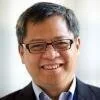What Friendship Truly Meant
/Book Review: Philippine-American Heritage in Washington, By Erwin R. Tiongson, D.C. Charleston, SC. The History Press. 2023. 126 pp.
This book is a crisp overview of Philippine-American history, highlighting Filipinos' impressions of the government offices and museums they visited and their official lodgings while sojourning in the American capital. They were a diverse group, from Commonwealth President Manuel L. Quezon, who lobbied and negotiated with the Americans on the nature and timing of Philippine independence, to Sofia de Veyra, the wife of resident commissioner Jayme de Veyra, who, in the "fortnight salons" at the Monroe House, held Washington, DC matronas in awe of her strong suffragist views and knowledge of "hand-wrought silver, jewelry fabrics, paintings, and other specimens" from the Philippines, and the colony's history. Decades later, the late historian Fr. Miguel Bernad held his first mass at Gonzaga Church. Bernad was at home in the area, most likely helped by fellow Jesuit Fr. Nicholas Kunkel, who served briefly as Prefect of Discipline of Georgetown University before being appointed Dean of Ateneo de Manila.
These days, we know that there will inevitably be an organization wherever there is a Filipino community in the United States. And I am not talking about significant Filipino associations but ethnolinguistic and provincial clubs here. Tiongson's book surprises because, as it turns out, such groups go back to the colonial era. In Washington, DC in the 1930s, the group Visayan Circle made Quezon et al. feel at home, welcoming them at train stations and, I assume, serving them lutong bahay, while the latter impressed them with stories about handling the Americanos.
The book, however, is not just about Filipinos visiting "D.C."; Americans, too, went to the Philippines to appreciate the structures their urban planners established. Tiongson also recalls when President Quezon welcomed 1,200 Jewish refugees escaping Nazi Germany into their newly adopted home. A docent at the Holocaust Museum remembered Quezon this way: "Who could forget his determined speech welcoming the immigration of Jewish refugees at the dedication of the Jewish home in Marikina in 1940, on land he provided." Then, as World War II came to a close, the Austrian-born conductor, Dachau survivor, and conductor of the prewar Manila Symphony Orchestra (MSO) Herbert Zipper, "gathered the surviving members of the orchestra and all the musical instruments they could find, determined to perform a concert to celebrate the liberation of Europe and Manila, Zipper's temporary home."
Erwin Tiongson (Photo courtesy of Rasheed Hamdan)
Handshakes, love letters, and official documents are often the usual ways to forge friendships. Tiongson tells us that examples of amity are also evident in comparative metropolitan histories. He writes: "The two cities, D.C. and Manila, evolved together. At the request of U.S. colonial administrators in the Philippines, Burnham produced a plan for Manila based on D.C., with Luneta as the central element of this plan. But with help from Helen Taft, these colonial ties have been mutually transformative, as Luneta reshaped D.C., its geography and social life, with springtime souvenirs that have lasted for more than a century (p. 21).”
And there is more: "Some Filipinos also imagine a striking resemblance between the Washington Monument and the Rizal Monument, both of which feature an obelisk, although this particular detail was not in Burnham's plan for Manila and was likely due more to the shared masonic affiliation of Washington and Jose Rizal, the Philippines’ National Hero (pp. 18-19)."
No wonder Quezon and colleagues were pleased when informed of American plans to make the Mall in Washington, DC a mirror image of Manila's Luneta Park.
When I had a brief stint in Washington, DC, over a decade ago, I had this odd feeling that I had "seen" many of the capital's structures before. Only after reading the above quote in the pre-print draft of Tiongson's excellent book did I realize how much the imperial and colonial capitals were mirror images of each other. This is a powerful ideological symbol of this "special relationship" that nationalists back home will struggle to dismantle.
In these waning years of the American empire, scholars have begun to question just how exceptional the United States is as a political system. This small book oddly adds fire to the debate. While American officials received Filipinos in "D.C.," the British, Dutch, and French never gave the same reception to their colonial subjects. Racism informed this exclusion, as did the belief that they were permanent overlords of Malaya and Burma, the Dutch East Indies, and Indochina, respectively. It took World War II and fierce anti-colonial resistance before the colonized peoples and their leaders were grudgingly accorded the same respect that the Filipinos received from the Americans. Before the war, the only Southeast Asians welcomed in Europe were Marxists and nationalists committed to end Western colonialism, and their hosts were fellow revolutionaries who were despised and persecuted by their state leaders. American exceptionalism at play?
Let me close with this sidebar that readers may want to pore over more closely -- all the women in this book, Filipinas and Americans, were influential personalities. No wonder they liked each other a lot. This is a story that historians may want to write about, a history of the American empire in the Philippines from the eyes of these women. One wonders how that history would read and how Filipinos and American Filipinos would respond.
Tiongson’s book is a great read.
Patricio Abinales is a professor at the Department of Asian Studies, University of Hawaii-Manoa. He was a visiting fellow at the Woodrow Wilson Center for International Scholars in Washington DC in 2009-2010.
More articles from Patricio Abinales





